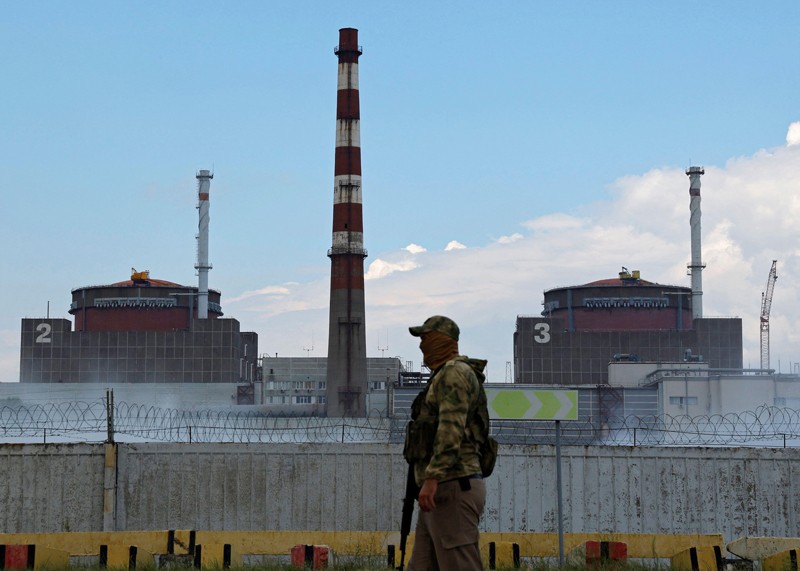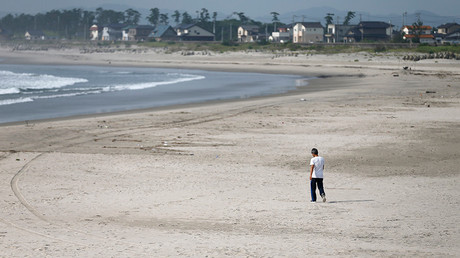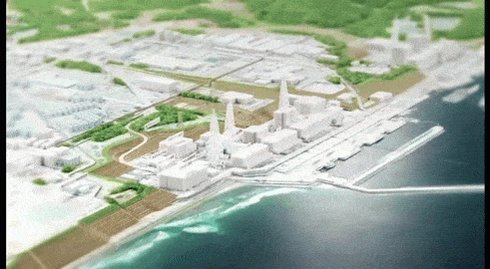An atmospheric scientist describes how researchers would track a toxic cloud in the case of an accident at the occupied Zaporizhzhia power station

Officials from the United Nations’ atomic-energy watchdog have this week begun inspections of southern Ukraine’s Zaporizhzhia Nuclear Power Station, where shelling and fighting have raised the risk of a nuclear accident. Russian troops have occupied the nuclear plant — Europe’s largest — since March as part of their ongoing war in Ukraine. The international community has issued stark warnings that damaging some of Zaporizhzhia’s six reactors could lead to catastrophic meltdowns like those that occurred in 2011 at the Fukushima Daiichi Nuclear Power Plant in Japan.
Following that accident, a network of stations around the world — primarily built to enforce a treaty that will ban nuclear-warhead tests across the world — helped to monitor and predict the motion of the radioactive plume emitted by the damaged reactors. The network is being built and maintained by the Preparatory Commission for the Comprehensive Nuclear Test Ban Treaty Organization (CTBTO).
If an accident were to occur at the Zaporizhzhia plant, Jolanta Kusmierczyk-Michulec could be among the first people to know. Kusmierczyk-Michulec is an atmospheric scientist at the CTBTO’s International Data Centre in Vienna, which is equipped to conduct computer simulations of the motion of a radioactive plume, forwards and backwards in time.
Nature spoke with Kusmierczyk-Michulec about how her work could help the world to cope with a possible accident at Zaporizhzhia.
What does the CTBTO’s nuclear-monitoring network do?
The International Monitoring System is a network of stations that are built and maintained by the CTBTO to ensure that no nuclear explosion goes undetected. For that purpose, we use monitoring stations, which are based on three waveform technologies — seismic, hydroacoustic and infrasound — and we also use radionuclide [detection] technology. This technology is the only one that can confirm whether an explosion detected and located by other technology is indicative of a nuclear test.
And how is your work involved?
In case a radionuclide station detects elevated values of radionuclides, we do backwards simulation [of how the air moves] to have information about the potential source of this detection. In special cases, we also do forward simulations.
We use an open-source atmospheric-transport model, and data from the meteorological centre ECMWF, the European Centre for Medium-Range Weather Forecasts, and from NCEP, the US National Centers for Environmental Prediction. Researchers also use this type of model for various other purposes, for example monitoring of volcanic emissions.
How did the CTBTO help to track the plume from the Fukushima Daiichi accident?
The Fukushima Daiichi Nuclear Power Plant released radioactivity into the atmosphere, which the International Monitoring System observed in the Northern Hemisphere for about three months. Radioactive noble gases, such as xenon, and radioactive particulates were detected.
During the Fukushima event, we did atmospheric-transport modelling to show where the air masses were going. I joined CTBTO in 2012, just after the accident, but still I did a lot of simulations related to it. It was one of the cases that we could use for scientific purposes and for research.
How would we find out if there is a detection of radioactivity released from the Zaporizhzhia plant? Does your network have stations nearby?
The fact that a station is close to the source doesn’t mean that this station will observe something, because air-mass trajectories are quite complex.
The CTBTO cooperates with the International Atomic Energy Agency in the framework of IACRNE, the Inter-Agency Committee on Radiological and Nuclear Emergencies [which was established after the 1986 Chernobyl nuclear accident in Ukraine and coordinates international preparedness and response to a radiological disaster].
For the CTBTO, the critical response task in the case of nuclear or radiological emergencies is to provide real-time data. It’s very likely that the international community would find out about the accident via the IACRNE.
Are there prevailing weather patterns around southern Ukraine that would determine how the plume would probably move?
The answer is not so straightforward. Air masses can travel a long way, for a long time. After a few days, they may reach quite a far distance, depending on the weather conditions, wind directions and wind speeds. Prevailing weather patterns are not a sufficient indicator, especially in that region with quite variable wind direction.
To provide a reliable answer, we would need to do a forwards simulation using atmospheric transport modelling and actual weather data. It’s likely that if I would repeat the simulation two days later, the air masses would move in a different way.
Have you performed any practice simulations of how a plume coming from the Zaporizhzhia plant would move?
The IDC [International Data Centre] isn’t practicing specifically for any such event, but I did some simulations as an exercise before we spoke, so I know that the wind direction is very variable. As of 29 August, a hypothetical plume would have moved towards the south-east, and after a few days would turn eastward. But this result was based on the forecast data, meaning that in an actual event the simulation should be repeated with the analysed data for higher confidence, once these are available.

